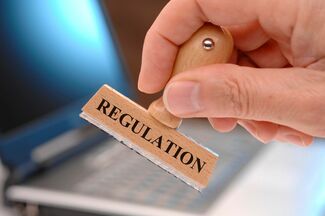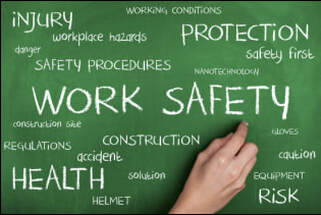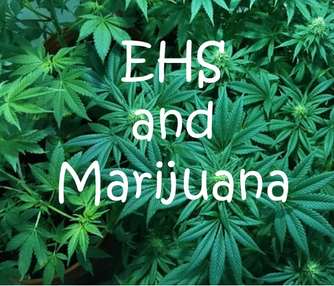fertilizer plant in West, Texas, the President issued an Executive Order 13650 entitled “Improving Chemical Facility Safety and Security.” The goal of the EO was to:
After a myriad of meetings with stakeholders, the USEPA published Amendments to the RMP Rule in the Federal Register on January 13, 2017. Subsequently, delays were issued by the current administration. But on August 17, 2018, the U.S. Court of Appeals decided to vacate the decision to delay and in September the court issued a mandate making the rule effective. And on December 3, 2018, the USEPA published in the Federal Register that the effective date for the amendments was December 3, 2018. See, it’s complicated.
What you really need to know is that some of the amendments require you to make changes to your RMP Program now, some changes won’t be required until March 15, 2021, and still other changes apply either now or in the future, but will only come into play under certain conditions. Lastly, all RMP submittals must be updated to the new requirements by March 14, 2022. I told you it’s complicated. But, let’s look at some of the high points. New Requirements that Must be Implemented Now:
Future Obligations - March 15, 2021:
Obligations to be Implemented under Certain Conditions The best examples here are the Third-Party Audit, Root Cause Analysis and conducting a Public Meeting. Each of these provisions have qualifiers. The regulation states that a third-party audit is only required when:
Similarly, if a reportable release occurs, a root-cause analysis must be done during the incident investigation and the facility must hold a public meeting. These requirements go into effect on March 15, 2021, but are only required if the conditions warrant them. Yes, it is complicated, but manageable. But, be careful, read the regulations carefully so you only implement the things you really need to. If you aren’t sure, give us a call. We are happy to answer questions about these or other RMP or PSM requirements. Here are links to some helpful RMP Rule amendments information.
Something we need to remember when we don’t get the budget we asked for is that EHS is only one of many competing interests within the company. EHS staff compete for capital and operating budgets just like the production department, finance department, IT, HR and others do. Most companies do care about their employees and the environment, but they also have to balance spending on EHS with spending on other projects, like upgrading computer security, installing production information kiosks, replacing the broken security gate, adding a new turntable for line 3 or a conveyor for line 6, and so on. Everything mentioned here has importance to many people in the company and may even contribute to a safer work environment. Measuring & Communicating Risk You are one of the company’s Risk Managers and are there to advise the people who run the company on what you recommend and don’t recommend concerning safety and environmental issues. When you do that, you need to be able to explain the basis of your position. The basis is very important because it helps the decision makers weigh the risks and potential consequences of delaying a particular project against those of acting right now. Let’s be honest, regulations, in and of themselves, have never been the only criteria used in deciding how and when to comply with a particular regulation. Companies cannot fix everything at the same time. It’s the costs and benefits that are the overwhelming factors that drive whether or not a company complies or not with a particular regulation at a particular time. The key to competing for a company’s limited resources is to seek opportunities to level the playing field. Instead of just identifying the need and its cost, be more comprehensive by identifying the risks, benefits and costs avoided. But, to do this, you’ll need to track and understand your accident, environmental compliance and waste management cost data. You also need to know how a regulatory agency might respond to the non-compliance and the potential ramifications to the company. Knowing these variables puts you in a better position to inform your superiors about how much they will save and their civil liabilities, rather than just how much they need to spend. About the Author: Bill Schneider is one of SRM’s Principal Consultants and has also served as an EHS Director for a multi-national firm and as regulator over the course of his career.
In reality there are a plethora of safety and environmental regulations already on the books that apply to these operations even though these new operations associated with marijuana are not mentioned specifically in the regulatory text. From hazard communications, emergency action plans and industrial hygiene to flammable liquids and solid and hazardous waste management; there is a regulation for just about every topic you can think of and they apply to the marijuana industry. Now, don’t get me wrong, there are some unique challenges for this industry due to the existence of controlled substances in the production chain. But the pharmaceutical industry has been dealing with that for many years and has some good models and lessons-learned to follow. The best way for this growing industry to handle all of these EHS requirements is to incorporate them right into the operations and compliance programs from the start. To those familiar with 5S, lean manufacturing and other world class manufacturing principles, this is a familiar exercise, and one implemented at companies who care about the company bottom line and employees. From floor plans to electrical systems. From raw material in the door to product and wastes going out the other end. Plan the Work and Work the Plan. And the Plan includes EHS compliance in the making of a new industry. MIOSHA likes to promote their Safety & Health Management System (SHMS) which includes important elements of any compliance program such as Management Commitment, Employee Involvement, Workplace Hazard Analysis and Hazard Prevention & Control. In other words, team work and being pro-active in detecting problems and correcting them. It’s not rocket science. It’s just good, sound business practice and this approach has been used by successful companies for decades. If you would like more information about EHS compliance programs that work for you, give one of our professionals a call. About the Author: Bill Schneider is one of SRM’s Principal Consultants and has also served as an EHS Director for a multi-national firm and as regulator over the course of his career. |
|




 RSS Feed
RSS Feed
